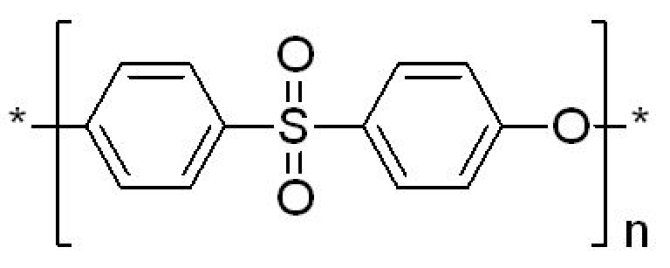Project
Enzyme catalysed modification of membranes
Flexible modification of polyethersulfone membranes under mild conditions
Poly(ethersulfone) (PES, see Figure 1) is a thermoplastic material which is abundantly used for the manufacture of ultrafiltration and microfiltration membranes. However, their inherent hydrophobicity gives rise to fouling by proteins and biocells. In order to capitalize on the usefulness of PES membranes in filtration operations, many studies have investigated surface modification of this material to make it polar and less hydrophobic. Attractive results have been achieved by using surface modification techniques such as blending and photoinduced grafting.

Figure 1: Molecular structure of PES.
In this study, a new and very promising technique for PES membranes modification is investigated. PES membranes are modified by using small polar organic molecules at room temperature and in aqueous medium in order to alter its properties (i.e. to make it less vulnerable to protein and biofouling).
Aims of this study
- Evaluation of the new modification technique for PES membranes.
- Evaluate the modified membrane(s) for protein separation and desalination.
- Process design based on performance of modified membranes.
Norhan Nady